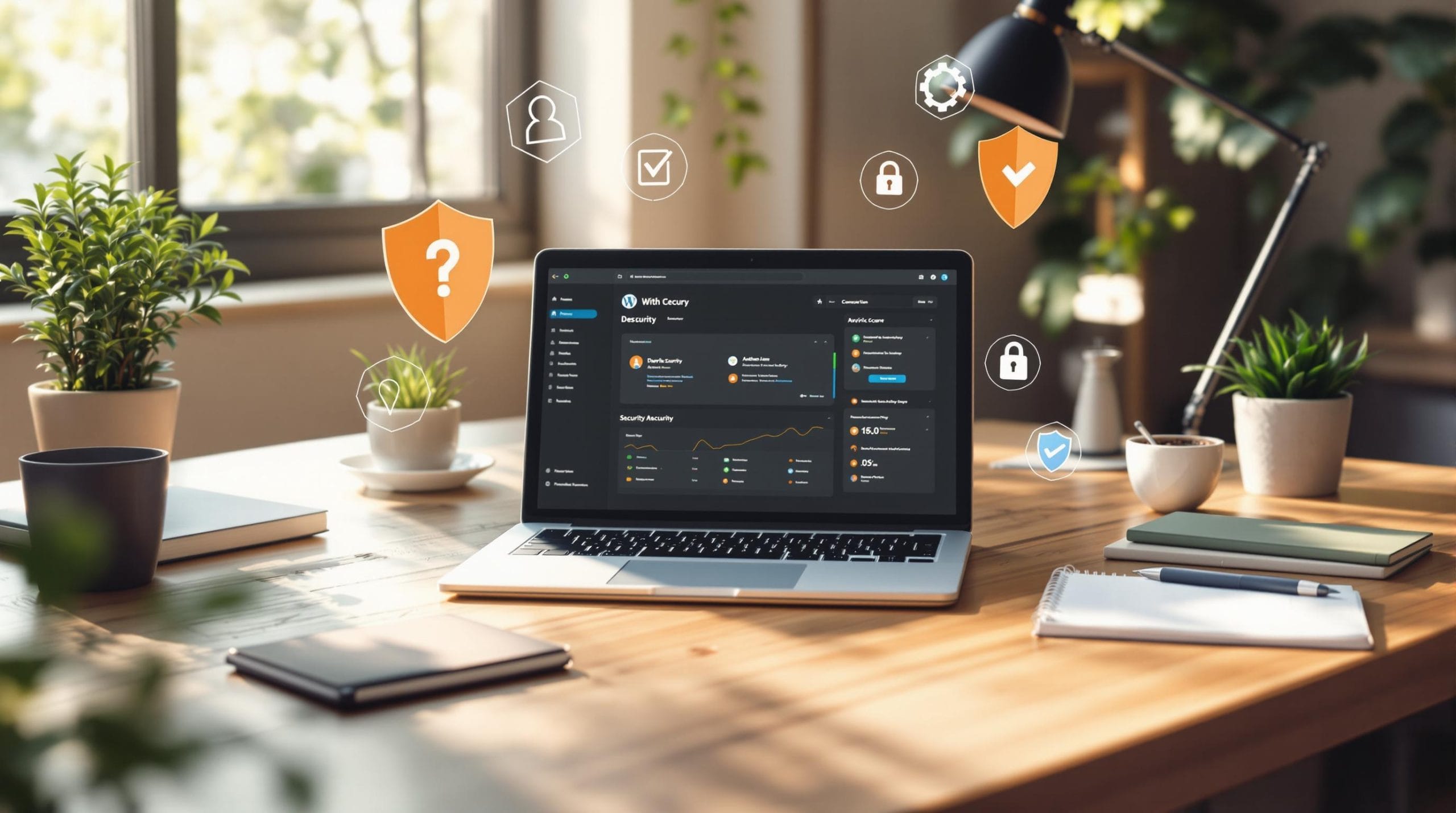WordPress powers over 43% of all websites, making it a prime target for hackers. Common vulnerabilities include outdated software, plugin flaws, weak login security, and malware. Here’s how to protect your site:
- Outdated Software: Causes 50.3% of infections. Automate updates and review plugins/themes monthly.
- Plugin Vulnerabilities: Account for 97% of issues. Use trusted plugins and remove abandoned ones.
- Login Security: Weak passwords and unlimited login attempts invite brute force attacks. Use strong passwords, two-factor authentication (2FA), and login protection plugins.
- Malware: Types include backdoors, redirects, and code injections. Regular scans and tools like MalCare can detect and remove threats.
Quick Overview of Solutions:
| Issue | Impact | Solution |
|---|---|---|
| Outdated Software | 50.3% of infections | Automate updates, review plugins/themes |
| Plugin Vulnerabilities | 97% of issues | Use trusted plugins, remove abandoned ones |
| Weak Login Security | Brute force attacks | Strong passwords, 2FA, login protection tools |
| Malware | 61.65% of affected sites | Run scans, use tools like MalCare |
Stay ahead by following a consistent schedule: daily scans, weekly updates, and quarterly reviews. WordPress security is all about proactive maintenance and using the right tools.
The Ultimate WordPress Security Guide To Prevent Hacking & Malware Attacks
Old Software Security Risks
Dangers of Outdated Code
Running outdated WordPress software puts websites at serious risk of hacking. In fact, Patchstack reported a 24% jump in new WordPress security vulnerabilities in 2023 compared to the previous year [4]. Shockingly, 94% of these vulnerabilities were tied to plugins, not the WordPress core itself [4].
Here’s why outdated code is a problem:
| Component | Risk Factors |
|---|---|
| Plugins & Themes | Abandoned updates, known security flaws |
| Core WordPress | Slow security fixes, compatibility gaps |
| Infected Sites | Easy prey for automated hacking tools |
The situation worsens when users download plugins or themes from unverified sources, which can introduce harmful code. Fixing outdated software issues should be a top priority before setting up a solid update plan.
How to Keep WordPress Updated
The best way to reduce risks is by staying on top of updates. WordPress 5.5 made this easier by allowing automatic updates for plugins and themes. The system now checks for updates twice a day and sends email notifications after any auto-update [5].
Here are some tips to manage updates effectively:
- Turn On Auto-Updates: Enable automatic updates for minor WordPress core changes and security fixes.
- Back Up Regularly: Set up automated backups before updates to prevent data loss.
- Check Plugin Health: Remove plugins that are no longer maintained by their developers.
To keep your site secure, stick to a maintenance routine that includes:
- Weekly checks for updates.
- Monthly reviews of all installed plugins and themes.
- Quarterly evaluations of plugin usefulness and performance.
- Compatibility tests before applying major updates.
Login Security Problems
Password and Username Risks
Weak login credentials pose a serious security threat. Surprisingly, "password" and similar variations were still among the most used passwords in 2020 [7]. This shows that many users neglect even the most basic security measures.
Here are some common risks and their potential impacts:
| Risk Factor | Security Impact |
|---|---|
| Default "admin" username | Makes brute force attacks easier |
| Weak passwords | Easily cracked using dictionary-based attacks |
| Single-factor authentication | Lacks an extra layer of protection |
| Unlimited login attempts | Allows attackers to use automated attack tools |
Many users still rely on the default "admin" username, which simplifies brute force attacks [6]. Weak login practices like these can make your site an easy target. Strengthening your login security is essential to reduce these vulnerabilities.
Better Login Security Methods
To improve your site’s protection, consider implementing these measures:
Strong Password Requirements
Encourage users to create passwords that are 10–50 characters long and include a mix of uppercase letters, lowercase letters, numbers, and special characters [7]. Instead of single words, password phrases can be more secure and easier to remember.
"WordPress password security is crucial for your website, it keeps out attackers and bots looking for low-hanging fruit." [7] – MalCare
Two-Factor Authentication (2FA)
Add an extra layer of security by using authenticator apps such as Authy, LastPass Authenticator, or 1Password [8]. These apps also provide account recovery options, so you won’t get locked out if you lose access to your device.
Recommended Plugins
For additional protection, you can install security plugins:
- All-In-One Security (AIOS) Premium: Priced at $70/year, this plugin is trusted by over 1 million users and has a 5-star rating [9].
- Limit Login Attempts Reloaded: With a 4.9/5 rating and over 2 million active users, this plugin is another excellent choice [10].
In February 2024, Limit Login Attempts Reloaded released version 2.26.15, bringing important updates for WordPress 6.7 compatibility and improved GDPR compliance for WooCommerce login pages [10].
sbb-itb-18064a9
Malware Protection Steps
Types of WordPress Malware
In 2021, 60.04% of infected websites had at least one backdoor [11], making it a major threat. Backdoors allow hackers to create hidden entry points for ongoing access to your site.
Here are some common types of malware that target WordPress sites:
| Malware Type | Description | Warning Signs |
|---|---|---|
| Backdoors | Hidden access points for hackers | Unexpected admin accounts, altered files |
| Redirects | Sends visitors to malicious websites | Reports of strange redirects by users |
| Code Injections | Inserts harmful code into your files | Unusual pop-ups, slow site performance |
| Session Hijacking | Steals user session data | Unauthorized admin access, compromised accounts |
For example, in March 2024, a vulnerability in the Popup Builder plugin put over 100,000 sites at risk of malware infection [3]. Similarly, a flaw in the Beautiful Cookie Consent Banner plugin exposed 1.5 million WordPress sites to session hijacking attacks [3]. The next section covers tools and strategies to detect and eliminate such threats.
Security Tools and Scans
To effectively detect and combat WordPress malware, you need advanced tools and consistent security practices. Automated daily scans and premium security solutions are key to keeping your site safe.
WordPress sites face around 13,000 hack attempts every day [14]. Tools like MalCare use advanced algorithms to identify malware beyond basic file matching [13]. For businesses needing higher-level protection, Astra Security offers scanning services starting at $199/month [12].
If malware is detected, take these steps immediately:
- Enable maintenance mode and back up your site entirely before starting cleanup.
- Clean infected files and databases.
- Remove any suspicious code.
- Reset all passwords to secure your accounts.
- Submit a review request through Google Search Console.
"The first step to removing malware from your site is to scan it with MalCare. Then use the one-click malware removal feature to auto-clean your site in minutes. Remember that malware gets worse the longer it remains on your site, so act fast." [13] – MalCare
Stopping Brute Force Attacks
What Brute Force Attacks Do
Brute force attacks pose a persistent threat to WordPress sites. As WordPress.org explains, "Unlike hacks that focus on vulnerabilities in software, a Brute Force Attack aims at being the simplest kind of method to gain access to a site: it tries usernames and passwords, over and over again, until it gets in" [2].
In late 2021, brute force attempts surged by 160%, making up 5% of confirmed breaches. Security company Sucuri reported blocking 450,000 attacks in just three months [17][16][15].
When successful, brute force attacks can:
- Grant hackers full administrative access
- Allow installation of malicious software
- Steal sensitive user information
- Wipe entire websites
- Overload servers, leading to crashes
To reduce these risks, it’s crucial to use specific tools and strategies designed to protect your site.
Login Protection Tools
Defending against brute force attacks requires a layered approach. Below is a comparison of popular security tools:
| Protection Method | Free Option | Premium Starting Price | Key Features |
|---|---|---|---|
| Wordfence | Yes | $99/year | Real-time IP blocking, firewall |
| Sucuri | No | $199.99/year | WAF, geo-blocking |
| iThemes Security | Yes | $80/year | Network protection, reCAPTCHA |
| Jetpack | Yes | Free | Global IP database check |
To strengthen your defenses, consider these steps:
-
Install a Brute Force Protection Plugin
Plugins like Limit Login Attempts Reloaded can safeguard login pages, XML-RPC, and WooCommerce interfaces [10]. They also send instant email alerts for lockouts and let you customize login attempt limits. -
Enable Two-Factor Authentication (2FA)
Adding 2FA makes it much harder for automated attacks to succeed. Premium tools like iThemes Security provide advanced options, including real-time security dashboards [17]. -
Set Up Server-Level Protection
As WordPress.org puts it, brute force attacks target "the weakest link in any website’s security… you" [2]. Strengthen your server with these measures:- Password-protect the
wp-login.phpfile - Restrict access to
wp-login.phpby IP - Disable XML-RPC if unnecessary
- Use a web application firewall (WAF)
- Password-protect the
Combining these layers of security is the best way to protect your site. For example, pairing Wordfence’s free version with Limit Login Attempts Reloaded offers strong defenses like IP blocking and login attempt limits, all while keeping costs low for smaller websites [17].
Conclusion: Security Action Plan
Key Security Measures
Keeping your WordPress site secure means using multiple layers of protection. With 97% of vulnerabilities stemming from plugins and themes [1], here’s how you can safeguard your site:
| Security Layer | Action Steps | Check Frequency |
|---|---|---|
| Core Protection | Install tools like Solid Security or Wordfence | Run daily scans |
| Access Control | Use two-factor authentication and strong passwords | Review weekly |
| Update Management | Turn on auto-updates for core, plugins, and themes | Check weekly |
| Backup System | Set up automated backups with UpdraftPlus | Back up daily |
| Activity Monitoring | Keep an eye on security logs and login attempts | Review daily |
"Visibility is the biggest solution. That’s why monitoring detection can be a good tool: it will tell you exactly what file changes were made in last few days" [1]
Staying consistent with monitoring is crucial to keeping your site secure.
Routine Security Checks
Stick to a regular maintenance schedule to ensure ongoing protection:
- Daily Tasks: Monitor uptime, review security alerts, and verify backups. Check login logs for unusual activity.
- Weekly Tasks: Update plugins, themes, and core software. Clear the cache and inspect file changes.
- Monthly Tasks: Remove unused plugins or themes, optimize your database, test critical site functions, and review user permissions.
- Quarterly Tasks: Change all WordPress credentials, review detailed security logs, and clean out your media library.
Professional security tools can make this process easier. Entry-level plans typically start at $50/month [18], and this investment is well worth it given the risks, like credit card skimmer attacks [1]. Regularly revisit updates, access controls, and malware scans to stay ahead.
"Whoever is in full management of a website should constantly make sure its inventory of software is up to date." [1]


